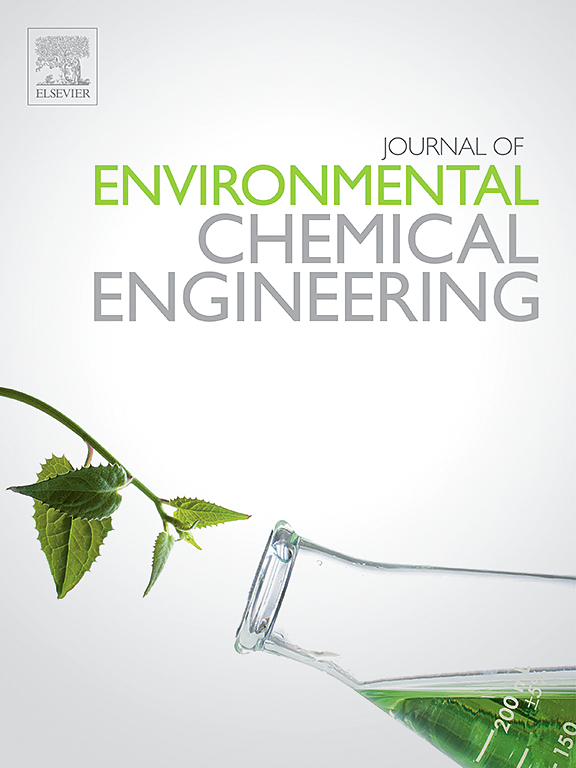Orange carbon dot nanomaterial as optical/visual sensing platforms for morin and a biomass booster for plant seedlings
IF 7.4
2区 工程技术
Q1 ENGINEERING, CHEMICAL
引用次数: 0
Abstract
The precise regulation of morin levels in both diet and medicine is essential to evaluate the nutritional quality of food. Furthermore, plant yield is attracting considerable attention in the agricultural and herbal industries. Accordingly, the sensing platforms based on orange S and N co-doped carbon dots (SNCDs) were developed to detect morin through photoluminescence signals in aqueous solutions, solid matrices, and zebrafish. These sensing platforms exhibited excellent selectivity toward morin and possessed good anti-interference abilities, achieving limits of detection with 0.31 and 0.19 μM in the aqueous solution and solid state, respectively. Furthermore, the application of the as-prepared SNCDs at low concentration enhanced plant growth (using soybean seedlings as a model). The biological effects may be attributed to the promotion of light reaction and excess light reaction-induced injury. These findings offer novel insights into potential applications of SNCDs in sustainable agriculture and environmental monitoring.
橙色碳点纳米材料作为莫林的光学/视觉传感平台和植物幼苗的生物量促进剂
要评估食物的营养质量,就必须精确调节饮食和药物中的吗啉含量。此外,植物产量在农业和草药产业中也备受关注。因此,我们开发了基于橙色 S 和 N 共掺杂碳点(SNCDs)的传感平台,在水溶液、固体基质和斑马鱼中通过光致发光信号检测吗啉。这些传感平台对吗啉具有极佳的选择性和良好的抗干扰能力,在水溶液和固体状态下的检测限分别为 0.31 和 0.19 μM。此外,低浓度施用制备的 SNCD 还能促进植物生长(以大豆幼苗为模型)。这些生物效应可能是由于促进了光反应和过量光反应引起的损伤。这些发现为 SNCDs 在可持续农业和环境监测领域的潜在应用提供了新的见解。
本文章由计算机程序翻译,如有差异,请以英文原文为准。
求助全文
约1分钟内获得全文
求助全文
来源期刊

Journal of Environmental Chemical Engineering
Environmental Science-Pollution
CiteScore
11.40
自引率
6.50%
发文量
2017
审稿时长
27 days
期刊介绍:
The Journal of Environmental Chemical Engineering (JECE) serves as a platform for the dissemination of original and innovative research focusing on the advancement of environmentally-friendly, sustainable technologies. JECE emphasizes the transition towards a carbon-neutral circular economy and a self-sufficient bio-based economy. Topics covered include soil, water, wastewater, and air decontamination; pollution monitoring, prevention, and control; advanced analytics, sensors, impact and risk assessment methodologies in environmental chemical engineering; resource recovery (water, nutrients, materials, energy); industrial ecology; valorization of waste streams; waste management (including e-waste); climate-water-energy-food nexus; novel materials for environmental, chemical, and energy applications; sustainability and environmental safety; water digitalization, water data science, and machine learning; process integration and intensification; recent developments in green chemistry for synthesis, catalysis, and energy; and original research on contaminants of emerging concern, persistent chemicals, and priority substances, including microplastics, nanoplastics, nanomaterials, micropollutants, antimicrobial resistance genes, and emerging pathogens (viruses, bacteria, parasites) of environmental significance.
 求助内容:
求助内容: 应助结果提醒方式:
应助结果提醒方式:


